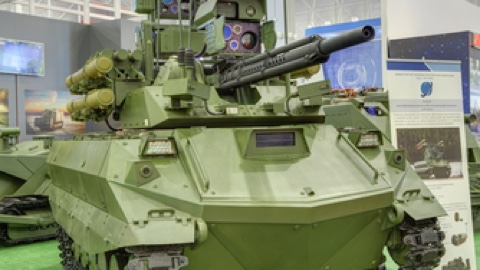
The Russian military has been extensively testing unmanned ground and aerial vehicles over the last few years and recently announced that it has plans to integrate artificial intelligence into military vehicles and combat operations. It is expected that the share of robots in the overall structure of Russian military equipment should reach 30 percent by the year 2025.
Unmanned ground vehicles include the Nerekhta, the Uran-9, and the Vikhr:
- The Nerekhta, a tracked unmanned ground vehicle, is equipped with a gun that is operated remotely, with a human picking targets. But a new version of the robot have a one-time payload, turning the robot into a one-use bomb. The robot, around 600 pounds and just over 3 feet long, is powered by an electric motor and can go as fast as 7 mph while carrying hundreds of pounds of explosives;
- The Uran-9 is fitted with a variety of weapons and sensors designed to provide remote reconnaissance and fire support to a variety of tasks conducted by the counter-terrorism, reconnaissance and military units in urban environments; and,
- The Vikhr is a remotely controlled reconnaissance vehicle which can be used to engage ground and aerial targets.
Unmanned aerial vehicles have flown 16,000 missions in Syria, according to Russian Defense Minister Sergei Shoigu. It was recently announced that Russia is studying the concept of drone “swarms” — defined as dozens or more drones operating as a single unit.
The chairman of the Federation Council’s Defense and Security Committee, Viktor Bondarev, has stated that Russia plans to integrate artificial intelligence into military vehicles and combat operations.
“The day is nearing when vehicles will get artificial intelligence. So why not entrust aviation or air defense to them?” Bondarev said.
